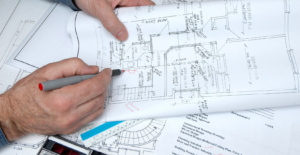The Complete Guide to Cost Estimating
In any project, effective planning and budgeting are essential for success. At the core of this planning process lies cost estimating—a technique that provides a detailed assessment of the funds required to complete a project successfully. Accurate cost estimates are pivotal for managing finances, setting realistic expectations, and ensuring project feasibility.

What is Cost Estimating?
Cost estimating is the process of predicting the resources, time, and expenses required to complete a project. Estimators evaluate all factors impacting project costs, including labor, materials, equipment, and overhead expenses. The primary objective of cost estimating is to provide decision-makers with an accurate financial plan for project execution and management.
Importance of Accurate Cost Estimation
Accurate cost estimation is crucial as it:
- Prevents Budget Overruns: With a reliable estimate, teams can prevent overspending and ensure efficient fund allocation.
- Supports Risk Management: Anticipating project costs aids in identifying potential financial risks, enabling teams to create contingency plans.
- Enhances Project Success: Accurate cost estimates align resources with project goals, helping keep the project on schedule and within budget.
- Strengthens Stakeholder Confidence: Investors, partners, and other stakeholders are more likely to support projects with well-defined financial estimates.
Types of Cost Estimates
Cost estimates vary depending on the project phase and detail level required. Each type serves a unique purpose within project planning:
Conceptual Estimate
A conceptual estimate, or “order-of-magnitude” estimate, is generated early in a project’s lifecycle. It provides a broad cost range, often based on historical data or similar project comparisons.
Preliminary Estimate
Preliminary estimates are used for budgeting and feasibility analysis. They require more detailed information than conceptual estimates, focusing on the general design and scope.
Definitive Estimate
A definitive estimate is highly detailed and used for final budgeting decisions. It includes specific pricing for labor, materials, and equipment, offering minimal variance from the final cost.
Control Estimate
Control estimates function as benchmarks, helping project managers track expenses and compare them against the initial budget. These estimates assist in identifying cost overruns and underperformance early on.
Methods of Cost Estimating
Several methods are used to create accurate and realistic cost estimates, each with unique advantages based on the project phase and information available:
Top-Down Estimating
Top-down estimation is a quick approach where a project’s total cost is assessed at a high level, often relying on previous project data. This method is useful in early project stages or when information is limited.
Bottom-Up Estimating
The bottom-up method involves estimating costs for individual tasks or components and summing them for a total estimate. This detailed approach is ideal for projects with clear scope and task breakdown.
Parametric Estimating
Using statistical and mathematical models, parametric estimating calculates costs based on historical data and specific variables, like labor hours or material quantities. This method is highly accurate when relevant data is available.
Analogous Estimating
Analogous estimation compares the project to similar, previously completed projects to predict costs. Though less precise than other methods, it’s efficient when detailed project data is unavailable.
Steps in the Cost Estimation Process
A systematic approach to cost estimation helps create thorough and reliable estimates. The general process includes:
- Define Scope and Requirements: Establish the project scope, objectives, and requirements.
- Identify Resources and Quantities: List required resources, such as labor, equipment, and materials, and calculate their quantities.
- Gather and Analyze Data: Use historical data, industry benchmarks, and market prices to assess cost factors.
- Calculate Costs and Create Estimate: Apply chosen estimating methods to calculate and compile costs into a cohesive estimate.
- Review and Refine the Estimate: Review the estimate, adjust for potential risks, and finalize it for approval.
Tools and Software for Cost Estimating
Many tools are designed to facilitate cost estimating, providing estimators with comprehensive databases, templates, and automation options. Popular software includes:
- Procore: Widely used in construction for tracking costs, managing budgets, and integrating with other project management tools.
- Sage Estimating: Offers advanced data analysis and reporting for more accurate construction estimates.
- PlanSwift: A takeoff and estimating software ideal for calculating material and labor costs, particularly in construction.
Challenges in Cost Estimation
Common challenges in cost estimation include:
- Data Accuracy: Inaccurate or outdated data can lead to flawed estimates.
- Unforeseen Variables: External factors like supply chain disruptions or economic changes impact costs.
- Scope Changes: Changes in project requirements can increase costs if not addressed in the initial estimate.
Cost Estimation in Different Industries
Cost estimation practices vary widely across industries due to differences in project types and requirements:
Construction Industry
Construction estimators account for materials, labor, permits, and equipment. Due to high financial stakes, accurate estimates are critical for project viability.
Manufacturing Industry
In manufacturing, cost estimates focus on raw materials, machinery, labor, and overhead. Efficiency in cost estimation here helps optimize production costs and price points.
IT and Software Development
Estimating costs in software projects involves assessing development time, labor, testing, and deployment. Software estimation often adapts to project scope, complexity, and resource availability.
Engineering and Design
Engineering projects require detailed estimates for design, materials, labor, and compliance costs. This industry often uses parametric and bottom-up approaches for detailed planning.
Best Practices for Effective Cost Estimation
Some best practices to enhance cost estimating accuracy include:
- Use Reliable Data: Historical data, current market rates, and industry standards are essential for realistic estimates.
- Account for Contingencies: Including contingencies in estimates helps manage unexpected costs.
- Regularly Update Estimates: Updating estimates as project details evolve ensures they remain accurate and relevant.
Role of Technology and AI in Cost Estimation
Modern technology, particularly AI, is revolutionizing cost estimating by enhancing data analysis, accuracy, and forecasting. AI algorithms analyze historical data to predict costs, improving estimation speed and accuracy.
Common Mistakes in Cost Estimating and How to Avoid Them
Frequent errors include underestimating project scope, overlooking hidden costs, and neglecting risk factors. These can be avoided by conducting thorough analyses, updating assumptions regularly, and involving stakeholders in the estimation process.
Frequently Asked Questions (FAQs)
- What is the difference between a cost estimate and a budget?
- A cost estimate predicts project costs, while a budget is a financial plan based on approved cost estimates.
- Why is cost estimation important in project management?
- Cost estimation ensures projects stay within budget and guides resource allocation for successful completion.
- What are parametric and analogous estimating?
- Parametric uses statistical models for costs, while analogous estimating compares costs to past similar projects.
- How often should cost estimates be reviewed?
- Regularly, especially after significant project changes or at key project milestones.
- What industries benefit most from cost estimating software?
- Construction, manufacturing, IT, and engineering industries benefit significantly from estimation software.
- Can AI improve cost estimating accuracy?
- Yes, AI can enhance data accuracy and provide predictive insights for more reliable estimates.

- Yes, AI can enhance data accuracy and provide predictive insights for more reliable estimates.
Conclusion
Cost estimating is a crucial practice across many industries, shaping project success, financial planning, and stakeholder confidence. Through a combination of reliable methods, advanced software, and continuous improvement, cost estimation supports effective project management and planning. View More About Us.

